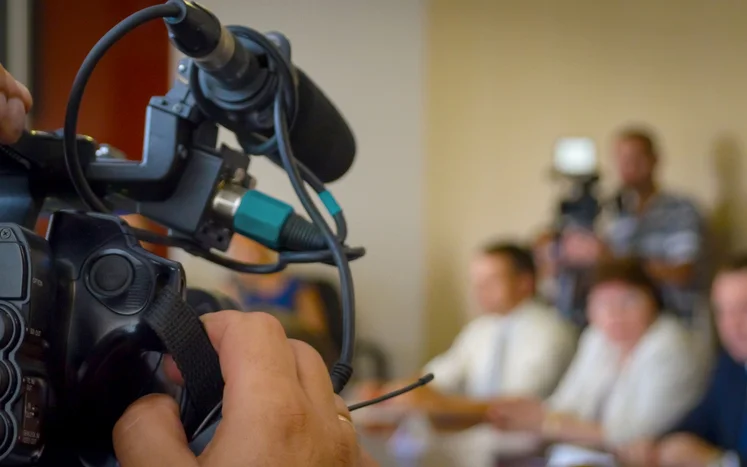How Legal Videography Enhances Courtroom Presentations and Evidence
How Legal Videography Enhances Courtroom Presentations and Evidence
Blog Article
Exploring the Vitality of Lawful Videography: a Comprehensive Understanding Into Its Functionality in Maintaining Accurate Visual Records for Legal Instances
Legal videography stands as a crucial element in the world of lawful process, serving as a quiet yet powerful onlooker in the search of justice. As we dig into the capability and importance of lawful videography in the context of legal situations, an extensive realization dawns upon the crucial duty it plays in shaping the program of justice.
Significance of Legal Videography
Highlighting the essential role of legal videography in contemporary lawful proceedings, its relevance hinges on its ability to offer undeniable aesthetic evidence that improves the presentation of statements and realities. By capturing live events, depositions, and witness statements in a video format, lawful videography ensures that every detail, nuance, and expression is accurately maintained for later testimonial. This aesthetic paperwork acts as an effective device in courts, allowing jurors and courts to better understand the context of a case and make informed decisions based on today proof.
Moreover, legal videography adds to increased transparency and accountability in the legal system. It helps prevent misinterpretation or manipulation of information by offering a clear and objective document of occasions. This aesthetic evidence can additionally be crucial in dealing with disputes, verifying declarations, and inevitably reinforcing the reputation of lawful procedures. Essentially, the importance of legal videography exists in its capacity to maintain the stability of the legal procedure by catching and protecting accurate aesthetic documents that support the search of justice.
Performance in Legal Documents
Legal videography's duty in contemporary lawful procedures extends past providing aesthetic evidence; its performance in legal paperwork is important for properly protecting the information of events and testaments. Through the careful recording of depositions, courtroom procedures, witness testimonies, and criminal offense scene examinations, legal videography makes certain an unfiltered account of events that can be reviewed and analyzed during the lawful procedure. This accurate paperwork offers as a vital source for judges, courts, and attorneys to reference details moments, body language, facial expressions, and subtleties that might not be fully captured in composed records alone.
In addition, legal videography plays a critical function in preserving the honesty of lawful process by reducing the risk of misconception or control of details. The aesthetic documents recorded via lawful videography provide an impartial representation of the realities presented throughout an instance, supplying a thorough and dependable resource of proof that can substantially influence the end result of lawful disagreements (Legal Videography). Fundamentally, the performance of legal videography in legal paperwork works as a cornerstone in supporting transparency, accuracy, and justness within the lawful system
Value in Visual Proof Preservation
Preserving visual proof via careful recording methods is a vital element of lawful videography. The value of visual evidence conservation can not be overemphasized in legal proceedings. Aesthetic evidence, such as videos of crime testaments, scenes, or accidents, can offer important insight right into events that words alone might not completely capture. By properly documenting these visuals, lawful videographers play a vital role in ensuring the stability and authenticity of proof presented in court.
Visual evidence conservation also assists in preventing misunderstandings or misinterpretations that can emerge from composed or spoken testimonies. The capacity to see and listen to events as they occurred can significantly affect the outcome of a situation. Visual proof can offer as an effective tool for both the prosecution and defense in providing their debates persuasively.
Role in Ensuring Justice
In the quest of reasonable and simply lawful results, the function of lawful videography is indispensable. Legal videography plays a vital duty in ensuring justice by offering honest and accurate visual evidence that can read this article significantly impact the result of legal situations. Unlike composed papers or testaments, video clip recordings record the subtleties of body movement, faces, and intonation, using a thorough depiction of occasions as they unravel. This aesthetic evidence is particularly important in courts, where it can help challenge or substantiate witness testimonies, strengthen arguments, and inevitably add to the facility of reality and fairness.
Furthermore, lawful videography functions as a means of maintaining turning points and details that might be missed or misinterpreted in created transcripts (Legal Videography). By recording scenes, actions, and interactions in real-time, lawful videography assists prevent misstatements and makes sure that all parties entailed have access to the very same info, promoting openness and accountability in the lawful process. Eventually, the use of lawful videography not only boosts the efficiency of lawful proceedings however also maintains the click over here now principles of justice and equity in the lawful system
Vital Tool for Legal Instances

Verdict
To conclude, legal videography plays an important duty in maintaining precise visual records for legal situations. Its importance depends on its capability in legal documentation, importance in aesthetic evidence preservation, and function in guaranteeing justice. As an important device for legal cases, legal videography works as an important resource for offering visual proof and adding to the overall stability of the legal procedure.
Legal videography's duty in modern lawful proceedings expands beyond giving visual proof; its performance in lawful paperwork is essential for properly preserving the information of testimonies and events. In significance, the functionality of lawful videography in legal paperwork offers as a cornerstone in promoting transparency, precision, and justness within the legal system.
Inevitably, the use of legal videography not just enhances the effectiveness of lawful proceedings however additionally supports the principles of justice and equity in the legal system.

As an important device for legal cases, legal videography offers as a useful resource for providing aesthetic evidence and adding to the general honesty of the legal procedure.
Report this page